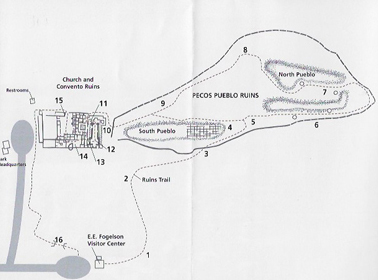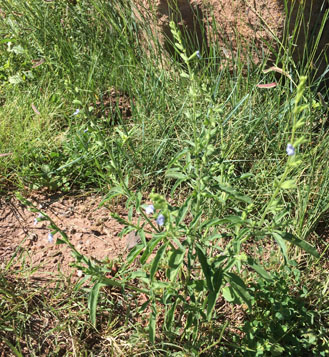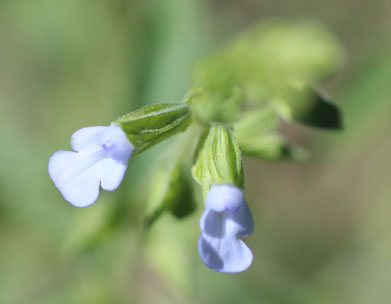
Location
On trail after the first kiva, between #3 & #6 (N35D33'08.681 X W105D41'23.537)
Flowers first observed: 8/25/17
Plant w/Flowers

The Flowers

Distribution
"Found on plains, mesas, rocky slopes, and open pine forest, from 4,000-7,000 ft (1219-2134 m); flowering July-October. ---Also look for this species in disturbed areas, roadsides, and pastures." (SEINet)
Description
"Annual of varying habit, aromatic, without punctate-glandular leaves and flowers, stems square, sometimes tinged deep purple, herbage puberulent to somewhat glabrous. Leaves: Opposite, lanceolate to oblong-linear, margins with entire or serrulate, petioles 2-20 mm long. Flowers: Blue or bluish- white, borne in interrupted spikes in verticels of 2 opposite flowers, sometimes in leaf axils, the corolla strongly 2-lipped with the upper lip helmet-shaped, entire or 2-lobed, the lower lip spreading or drooping and 3-lobed. Calyx lobes bilabiate, persistent. 2 fertile stamens inserted in the tube of the corolla. Fruits: Four smooth nutlets.---The keys to this species are the annual habit, the lack of glandular-punctate vegetation, the blue or bluish-white flowers,the calyx lobes 2-lipped with with 12-13 ridges (nerves), the stamens inserted in the upper lip of the corolla, and the mostly linear-lanceolate leaves. ---The key to distinguishing between Salvia and Stachys is that Stachys has four stamens and a regular calyx, while Salvia has 2 stamens and the calyx is bilabiate. (SEINet)
Ethnobotanical Uses
Medicine:
"There is no specific use recorded for this species, but the genus was used as an infusion to treat measles, and eaten raw for kidney troubles." (SEINet)
Internet Links